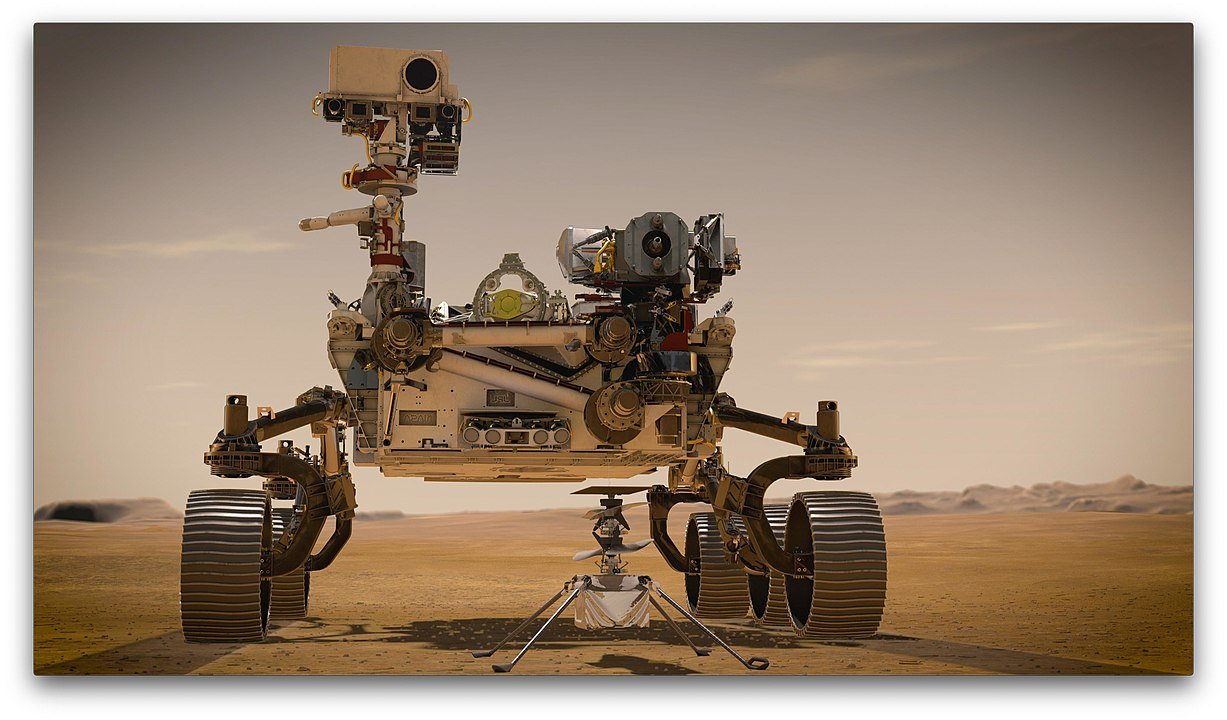Image: NASA/JPL-Caltech
What an incredible Summer! In the past month we’ve seen not one but three spacecraft making their way to planet Mars:
- the Hope Mars orbiter by the United Arab Emirates began its journey on July 19th
- the Chinese Tianwen-1 mission (an orbiter and a rover) took off on July 23rd
- and finally the long-awaited NASA Mars 2020 (Perseverance rover and Ingenuity helicopter), was launched yesterday, on July 30th.
Why so many
There is a good reason for such a busy schedule. If you want to go to Mars, you don’t simply fly in a straight line. Instead, you follow an elliptical orbit that connects the orbits of the Earth and Mars. And if you want to land on the Red Planet, make sure you reach its orbit when Mars is actually there. Such an opportunity only comes once every 26 months and the July 2020 launch window was one of them. The next chance to launch to Mars will be in 2022.
Yesterday, on July 30th, the last of the 2020 Mars missions began its 6.5 month journey to the Red Planet. The NASA Perseverance rover is expected to reach its destination on February 18, 2021. Fly safely, Mars 2020!
But what’s so special about this particular rover, you may ask? After all, it is neither the first rover to go to Mars, nor the last.
When it comes to space exploration, there is no such thing as “just another rover”. Every machine we build and launch, has its own specific tasks to perform and scientific questions to address. But yes, there were several rovers on Mars before Rover 2020. Moreover, one of them, Curiosity, is still in operation today. In fact, Perseverance’ design is based on Curiosity and the new rover borrowed many of the spare parts made for its predecessor.
Of course, as engineers watched Curiosity work on Mars, they came up with lots of ideas on how to improve the rover’s performance. So they made Perseverance’s wheels wider, installed better high resolution full-colour cameras and did other improvements to help the rover do its job, which is to look for signs of the past live on Mars.
Here are 5 things that make Perseverance rover really special
It has a companion
Perseverance is not travelling to Mars alone, it has a companion under its belly, a small solar-powered helicopter named Ingenuity. Ingenuity’s mission is a technology demonstration. Can a drone fly in a thin martian air? Can enough hardware be packed into a tiny lightweight flying machine to make it useful on Mars? If Ingenuity answers “yes” to these questions, then it will give the future Mars exploration a whole new dimension.
It will test the oxygen-making machine
One of the most exciting experiments the new rover will perform is called MOXIE, or Mars Oxygen In-Citu Resource Utilization. MOXIE’s job is to make oxygen out of the thin carbon dioxide atmosphere of Mars. Like Ingenuity, MOXIE is a technology demonstration, therefore it is not going to be very efficient at oxygen-making. But if it works, we can build even bigger machines in the future to make oxygen for the astronauts to breath and for the rockets to fly.
It can hear
The rover carries two microphones. A SuperCam microphone will listen to the martian wind, rover’s hum as well as to the sounds of rover blasting the martian rocks with its laser. The second one, the descent microphone, will record the sounds of the rover’s landing. We cannot wait to hear what Mars sounds like!
It will test the spacesuit materials for the future missions
Spacesuits protect astronauts from the elements, or from the absence of such. Our greatest enemy in space, radiation, can penetrate a suit and cause damage to human cells. To make sure the spacesuits designed for the future missions to the Moon, Mars and other places provide the best protection against the high-energy particles, Perseverance will carry bits of the spacesuit materials to Mars to see how well they hold (or how fast they degrade) when exposed to the radiation.
It will collect samples
Perseverance is exactly the same size as its predecessor, but a bit heavier. This is partly due to the sample collecting system. The rover will be able to collect samples of rock and soil using its drill, pack the samples into special tubes, seal them and leave in a specific location for the future missions to collect.
Still curious?
If you want to learn more about robotic space exploration and search for life in the Universe, check out our other Space Blog posts or send your questions to our Star Dome team. And don’t forget to visit WonderDome Portable Planetarium for a virtual tour of the night sky, the Solar System and beyond (and yes, we will land on Mars!).

